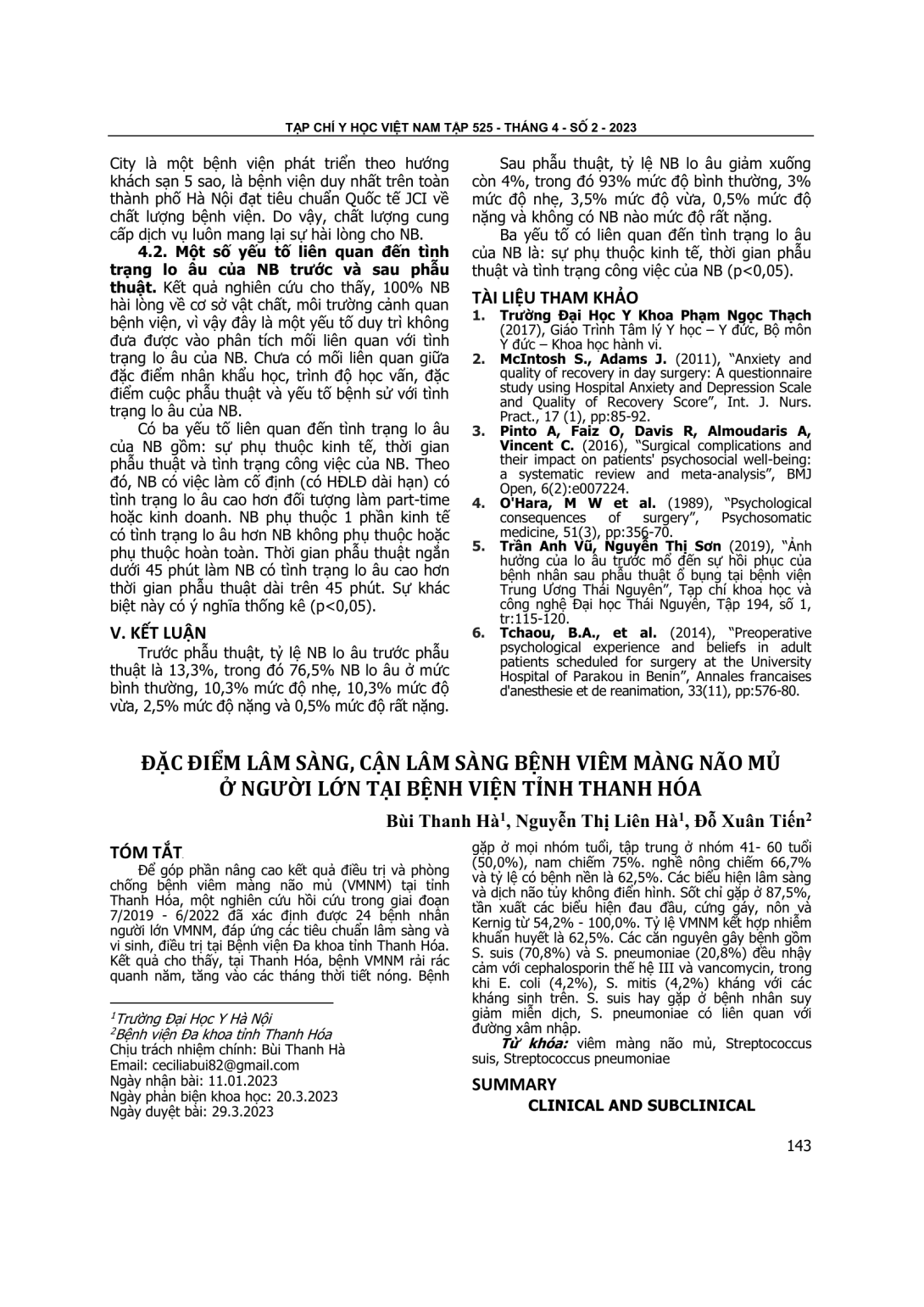
Để góp phần nâng cao kết quả điều trị và phòng chống bệnh viêm màng não mủ (VMNM) tại tỉnh Thanh Hóa, một nghiên cứu hồi cứu trong giai đoạn 7/2019 - 6/2022 đã xác định được 24 bệnh nhân người lớn VMNM, đáp ứng các tiêu chuẩn lâm sàng và vi sinh, điều trị tại Bệnh viện Đa khoa tỉnh Thanh Hóa. Kết quả cho thấy, tại Thanh Hóa, bệnh VMNM rải rác quanh năm, tăng vào các tháng thời tiết nóng. Bệnh gặp ở mọi nhóm tuổi, tập trung ở nhóm 41- 60 tuổi (50,0%), nam chiếm 75%. nghề nông chiếm 66,7% và tỷ lệ có bệnh nền là 62,5%. Các biểu hiện lâm sàng và dịch não tủy không điển hình. Sốt chỉ gặp ở 87,5%, tần xuất các biểu hiện đau đầu, cứng gáy, nôn và Kernig từ 54,2% - 100,0%. Tỷ lệ VMNM kết hợp nhiễm khuẩn huyết là 62,5%. Các căn nguyên gây bệnh gồm S. suis (70,8%) và S. pneumoniae (20,8%) đều nhậy cảm với cephalosporin thế hệ III và vancomycin, trong khi E. coli (4,2%), S. mitis (4,2%) kháng với các kháng sinh trên. S. suis hay gặp ở bệnh nhân suy giảm miễn dịch, S. pneumoniae có liên quan với đường xâm nhập.
To contribute to improving the results of treatment and prevention of bacterial meningitis (BM) in Thanh Hoa province, a retrospective study in the period 7/2019 - 6/2022 was conducted. 24 BM adult patients responded clinical and microbiological criteria, treated at Thanh Hoa Provincial General Hospital were selected for analysis. The results showed that, in Thanh Hoa, BM occurred all year round, increasing in hot months. The disease was found in all age groups, mainly in the 41-60 age group (50.0%), 75% males, 66.7% farming occupation, and 62.5% patients with underlying disease. Clinical manifestations and cerebrospinal fluid were atypical. While fever was only seen in 87.5% of patients, symptoms such as headache, neck stiffness, vomiting, and Kernig ranged from 54.2% to 100%. The rate of BM associated with bacteremia was 62.5%. Pathogenic bacteria, including S. suis (70.8%) and S. pneumoniae (20.8%) were susceptible to third-generation cephalosporins and vancomycin, while E. coli (4.2%) and S. mitis (4.2%) resistant to these antibiotics. S. suis was common in immunocompromised patients, S. pneumoniae was associated with the route of entry.
- Đăng nhập để gửi ý kiến
